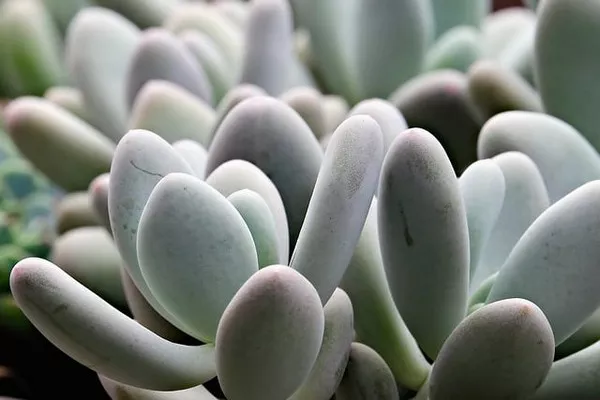Succulents have become increasingly popular in outdoor gardening due to their unique and diverse range of shapes, sizes, and colors, as well as their ability to thrive in various climates and conditions. Whether you’re a seasoned gardener or a beginner, cultivating succulents outdoors can be a rewarding and enjoyable experience. However, to ensure the success of your outdoor succulent garden, it’s essential to understand their specific needs and how to care for them properly. In this comprehensive guide, we’ll explore everything you need to know to grow healthy and vibrant outdoor succulents.
Understanding Succulents: What Makes Them Thrive Outdoors
Before delving into the specifics of outdoor succulent care, it’s crucial to understand the unique characteristics of these plants that enable them to flourish in outdoor environments. Succulents are known for their ability to store water in their leaves, stems, or roots, allowing them to survive in arid conditions with minimal moisture. This adaptation makes them well-suited to outdoor environments with ample sunlight and well-drained soil.
One of the key factors in successfully growing outdoor succulents is providing them with the right amount of sunlight. Most succulents thrive in full sun or partial shade, depending on their species. When selecting a location for your outdoor succulent garden, choose a spot that receives at least six hours of sunlight per day. However, in hot climates, some succulents may benefit from partial shade during the hottest part of the day to prevent sunburn.
In addition to sunlight, proper soil drainage is essential for the health of outdoor succulents. Succulents are susceptible to root rot if they’re left sitting in waterlogged soil for extended periods. To promote healthy root growth and prevent moisture-related issues, plant your succulents in well-draining soil. A mixture of cactus or succulent potting mix combined with perlite or coarse sand works well for outdoor succulents, ensuring that excess water can drain away quickly.
Selecting the Right Succulents for Your Outdoor Garden
When choosing succulents for your outdoor garden, consider the climate and environmental conditions of your region. While many succulents are resilient and adaptable, some species are better suited to specific climates than others. Research the cold hardiness and heat tolerance of different succulent varieties to ensure they can withstand the conditions in your area.
Some popular outdoor succulents include:
1. Sempervivum (Hens and Chicks): These rosette-forming succulents are incredibly hardy and can tolerate a wide range of temperatures, making them ideal for outdoor gardens in various climates.
2. Echeveria: Known for their stunning rosette-shaped foliage, echeverias thrive in full sun and well-draining soil, making them perfect for outdoor gardens and container arrangements.
3. Sedum: With their diverse range of shapes and colors, sedums are versatile outdoor succulents that are drought-tolerant and easy to grow in garden beds or containers.
4. Agave: While agaves require more space due to their large size, they’re excellent focal points for outdoor gardens, especially in arid regions with hot, dry climates.
5. Aloe: Aloe vera and other aloe species are well-suited to outdoor gardens, providing both aesthetic appeal and medicinal benefits. They prefer bright, indirect sunlight and well-draining soil.
Before purchasing succulents for your outdoor garden, familiarize yourself with their specific care requirements to ensure they’ll thrive in your chosen location.
Caring for Outdoor Succulents: Maintenance Tips for Success
Once you’ve selected and planted your outdoor succulents, proper care and maintenance are essential for their long-term health and vitality. Follow these tips to ensure your succulent garden thrives:
1. Watering: While succulents are drought-tolerant plants, they still require occasional watering, especially during periods of extreme heat or prolonged drought. Water your outdoor succulents deeply but infrequently, allowing the soil to dry out completely between waterings. Avoid overhead watering, as this can lead to fungal diseases and rot. Instead, water the soil directly at the base of the plants.
2. Fertilizing: Outdoor succulents generally don’t require frequent fertilization, as they can extract nutrients from the soil. However, you can apply a diluted, balanced fertilizer during the growing season to promote healthy growth. Avoid over-fertilizing, as this can cause excessive foliage growth at the expense of vibrant colors and compact growth habits.
3. Pruning and Deadheading: Regular pruning and deadheading can help maintain the shape and appearance of your outdoor succulent garden. Remove any dead or damaged foliage to prevent the spread of disease and encourage new growth. Prune leggy stems to promote a more compact and bushy growth habit.
4. Pest and Disease Control: Keep an eye out for common pests such as aphids, mealybugs, and spider mites, which can infest outdoor succulents. If detected, treat the affected plants promptly with insecticidal soap or neem oil to prevent the infestation from spreading. Additionally, ensure good air circulation around your succulents to reduce the risk of fungal diseases such as powdery mildew and root rot.
5. Winter Protection: In regions with cold winters, outdoor succulents may require protection from frost and freezing temperatures. Consider covering sensitive plants with frost cloth or moving potted succulents indoors during the winter months. Mulching around the base of outdoor succulents can also help insulate the soil and protect the roots from extreme cold.
By following these essential care tips, you can maintain healthy and vibrant outdoor succulents that will enhance the beauty of your garden year-round.
Conclusion
Growing outdoor succulents can be a fulfilling and rewarding endeavor, allowing you to create stunning garden displays with minimal maintenance. By understanding the unique needs of succulents and providing them with the right growing conditions, you can enjoy a thriving garden filled with an array of shapes, colors, and textures. Whether you’re a novice gardener or a seasoned enthusiast, incorporating outdoor succulents into your landscape design is sure to add charm and elegance to your outdoor space. With proper care and attention, your succulent garden will continue to delight and inspire for years to come.


